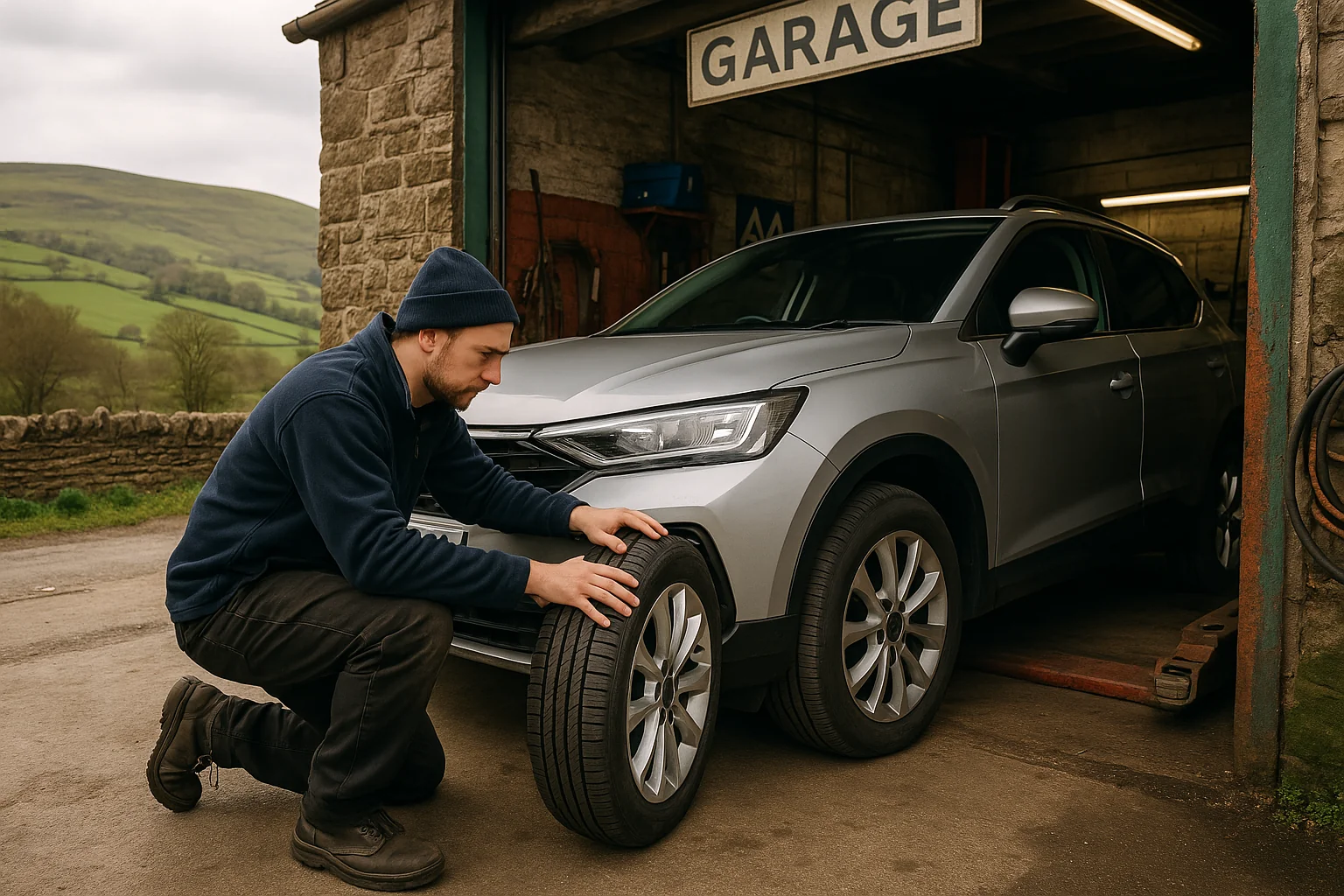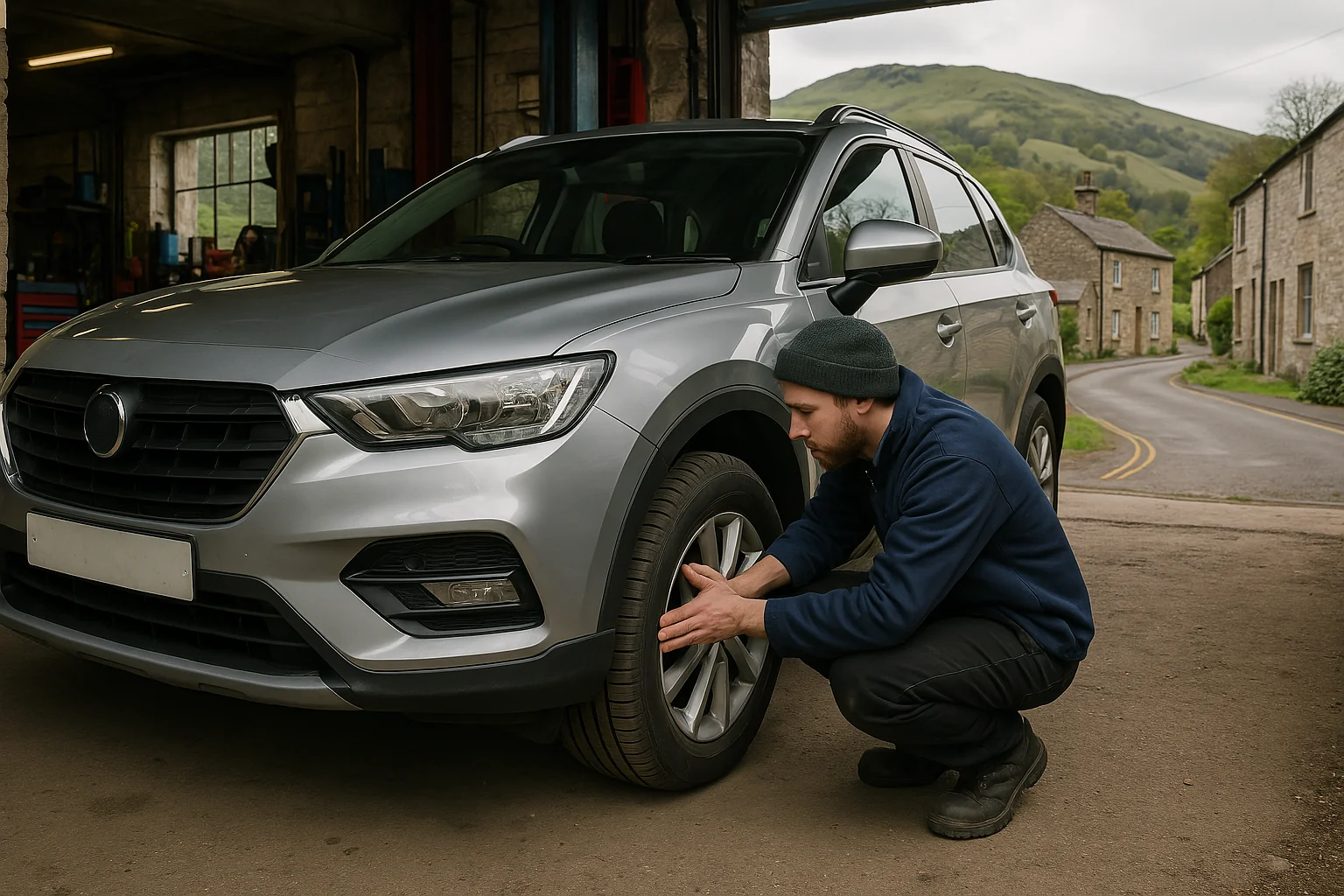Latest News and Articles
See below the list of our latest news and articles from our BLOG on the Einsure website:
Top 3 Tips to Save Money on Your Car Insurance Policy
Car insurance is one of those necessary expenses that every driver must factor in, but that doesn’t mean you have to pay over the odds for it. With a bit of smart thinking and the right tools, you could save a significant amount on your premium each year.
Here are the top 3 tried-and-tested tips to save money on your car insurance policy, including insights inspired by MoneySavingExpert and how sites like Einsure can do the hard work for you.

1. Always Shop Around – Loyalty Rarely Pays
One of the biggest myths in the insurance world is that staying loyal to your current provider will reward you with better rates. In reality, loyalty often leads to higher premiums. As Martin Lewis from MoneySavingExpert regularly advises, shopping around before renewal is one of the easiest ways to cut costs.
Don’t accept your renewal quote without question. Use a comparison site like Einsure.uk to view prices from a wide range of insurers in just a few minutes. You’ll often find that the same provider offers a cheaper deal to new customers via comparison tools than they do through a direct renewal.
Top Tip
The best time to compare quotes is around 23 to 26 days before your policy renews – this is when insurers tend to offer the most competitive prices, according to MoneySavingExpert.
2. Adjust Your Excess and Avoid Unnecessary Extras
Tweaking your voluntary excess (the amount you agree to pay in the event of a claim) can help reduce your premium. Generally, the higher your excess, the lower your premium — just make sure it’s an amount you can realistically afford to pay if you do need to make a claim.
Also, review your policy extras. Some add-ons like breakdown cover, courtesy cars, or legal protection might already be covered elsewhere (for example, through a bank account or roadside assistance membership). Only pay for what you actually need.
When using Einsure’s comparison system, you can easily adjust these options to find the right balance between cost and cover.
3. Make Sure Your Details Are 100% Accurate
When applying for car insurance, accuracy is crucial. Providing incorrect or incomplete information can not only lead to higher premiums, but may also invalidate your policy in the event of a claim.
Some key areas to double-check:
Your annual mileage – Overestimating can bump up your premium unnecessarily.
Where your car is kept overnight – A garage is usually cheaper than on-street parking.
Your job title – Some roles are considered higher risk than others, even if the duties are similar. Tools like the MoneySavingExpert Job Picker can help you see which variation of your title might reduce your premium.
With Einsure.uk, the process is simple and intuitive. You’ll be guided through each step of the quote process, with clear explanations to help you enter the right info and avoid mistakes that could cost you.

Einsure – Helping You Compare, Save, and Drive with Confidence
At Einsure, we make it easy to compare car insurance quotes from leading UK providers in minutes. Whether you’re looking to cut costs, improve cover, or simply ensure you’re not overpaying, our platform puts you in control.
You’ll see side-by-side comparisons, access exclusive deals, and be able to tweak your policy details in real time to see how they affect your premium. It’s car insurance made simple — and sensible.
Final Thoughts
Saving money on your car insurance doesn’t require a huge effort — just a bit of know-how and the right tools. Shop around, fine-tune your policy, and always be accurate with your details. Sites like MoneySavingExpert offer great guidance, but when it comes to actually finding and comparing quotes, Einsure.uk is the place to start.
Why pay more than you need to? Let Einsure help you find a better deal today.
Top 5 Tips for Caring for Your Tyres in Summer
As the temperatures start to rise, so does the importance of keeping your vehicle in top condition — and your tyres are no exception. Whether you’re planning a staycation in Derbyshire, a long motorway drive, or just more frequent outings in the sun, summer driving puts unique demands on your tyres.
To help you stay safe, legal, and road-trip ready, here are five essential tips for caring for your tyres in summer.

1. Take Advantage of Free Tyre Health Checks
Many local tyre fitters across Derbyshire offer free tyre health checks — and they’re well worth making use of. These checks often include inspections for tread depth, sidewall damage, and general wear and tear, giving you peace of mind before setting off on any long journeys.
Tyre specialists can also spot potential issues you may not notice yourself, such as uneven wear caused by poor wheel alignment or underinflation. Regular checks like these can help extend the life of your tyres and improve your car’s safety and fuel efficiency.
2. Check and Adjust Tyre Pressures Regularly
Warmer temperatures can affect tyre pressure, which in turn impacts how your car handles and brakes. Underinflated tyres are especially dangerous in summer, as the added heat and road friction can increase the risk of a blowout.
Always check your tyre pressures when the tyres are cold, and especially before long drives or when carrying extra passengers or luggage — such as during summer holidays. Most cars have recommended pressure levels listed in the owner’s manual or on a sticker inside the driver’s door. Many petrol stations and garages in Derbyshire offer free or low-cost pressure checks and air.
3. Inspect Tyre Tread Depth
In the UK, the legal minimum tread depth is 1.6mm across the central three-quarters of the tyre, but it’s a good idea to replace tyres before they reach this limit — especially during summer months when sudden rain can make roads dangerously slippery.
Use the 20p test: insert a 20p coin into the main tread grooves. If you can see the outer rim of the coin, your tread is likely too low. Good tread depth helps maintain grip, especially in wet conditions after a hot spell when roads become greasy.
4. Avoid Overloading Your Car
Summer often means road trips, camping gear, suitcases, or even towing a trailer or caravan. But overloading your car can put excessive strain on your tyres, leading to premature wear or even a blowout.
Always check your vehicle’s weight limits and ensure your tyres are inflated accordingly. Remember, your insurance could also be affected if you’re found to be driving with an overloaded vehicle in the event of a claim.
5. Keep an Eye Out for Cracks or Bulges
Hot tarmac and long drives can increase wear on your tyres. Summer heat may accelerate cracking in the sidewalls or worsen existing damage. Bulges, meanwhile, often indicate internal damage to the tyre’s structure and should never be ignored.
If you spot any of these signs, get your tyres inspected or replaced as soon as possible. A small problem can quickly become a big one at motorway speeds.

Don’t Forget Your Insurance – Einsure Makes It Easy
While looking after your tyres is essential for road safety, it’s equally important to ensure your car insurance is up to date and offers the right level of cover. At Einsure.uk, you can compare car insurance quotes from a range of leading UK providers, helping you find the best deal for your needs and budget.
Our simple comparison tool lets you filter by cover type, excess level, and more — so whether you’re driving to the Peak District or commuting daily in Derby, you’ll have confidence that you’re properly protected.
Conclusion
In summary, caring for your tyres in summer is all about being proactive: check your pressures, inspect your tread, take advantage of free local checks, and make sure your insurance is working just as hard as your car is. For peace of mind on the roads, regular maintenance paired with the right policy from Einsure is a winning combination.
Finding Car Insurance in Derby: 7 Reasons to Use a Comparison System
When you’re on the hunt for affordable car insurance in Derby, Einsure is your go-to resource. We understand how confusing and time-consuming it can be to find a policy that fits your budget and meets your needs. By using Einsure’s comparison system, you can streamline the entire process, secure the best deals, and ensure that your car insurance is both affordable and reliable. Here are seven key reasons why using Einsure’s comparison tool is the best choice for Derby drivers.
1. Comprehensive Comparison for Cost Savings
Einsure’s comparison system scans multiple insurance providers, saving you time and potentially hundreds of pounds. Instead of visiting each provider individually, Einsure lets you compare dozens of options at once. This ensures that you get the most affordable car insurance available in Derby without sacrificing essential coverage. With all the options laid out in one place, you can easily find a policy that fits your budget.
2. Customised Quotes Tailored to Your Needs
At Einsure, we understand that every driver is unique. By entering your details into our system, we’ll tailor your quote to reflect your specific requirements and driving profile. Whether you’re a new driver, have a no-claims discount, or drive infrequently, Einsure’s comparison tool allows you to adjust the details and find a policy that works best for you.
3. Access to Exclusive Deals and Discounts
When you use Einsure’s comparison system, you gain access to exclusive deals and discounts that may not be available elsewhere. Many insurance providers offer special rates through comparison sites, allowing you to benefit from price reductions and unique offers. These exclusive savings can make a significant difference in finding the cheapest car insurance in Derby.
4. Save Time by Comparing in Minutes
The Einsure comparison system is fast and easy to use, letting you compare policies within minutes. With just a few clicks, you’ll have a clear view of what different insurance providers are offering, saving you from hours of research and phone calls. This means you can secure affordable car insurance quickly and get back to focusing on what matters most.
5. Importance of Accurate Information
When using Einsure’s comparison tool, it is crucial to enter accurate information. This ensures that you receive the correct quote, and more importantly, prevents issues with your insurance later. Providing incorrect information could lead to a policy being invalidated or a claim being denied. For example, if you understate your annual mileage or fail to disclose any driving convictions, you might end up paying more in the long run. Einsure makes it easy to double-check your details, helping you avoid costly mistakes.
6. Transparent Policy Details
Einsure goes beyond simple cost comparisons, providing clear information on policy details, including coverage limits, excess amounts, and optional add-ons. This transparency helps you make an informed decision, ensuring that you choose a policy with the right level of cover for your needs. When you know exactly what you’re paying for, you can avoid unexpected surprises down the line.
7. Ongoing Support and Guidance
Choosing an insurance policy is just the beginning. Einsure offers ongoing support to ensure that you continue to get the best deal each year. Our system allows you to set up reminders for when your policy is due for renewal, helping you stay on top of your insurance and avoid unexpected premium hikes. By using Einsure’s comparison system, you can take control of your car insurance and feel confident that you’re always getting the best value.

Top Tips for Finding Car Insurance in Derby with Einsure
-
Shop Around Regularly: Even if you already have car insurance, it pays to check for new quotes every year. Einsure can help you find a better deal at renewal time, potentially saving you money.
-
Provide Accurate Information: To avoid any issues, always ensure the details you provide are up-to-date and accurate. Double-check your information before submitting your quote request.
-
Consider Voluntary Excess: Opting for a higher voluntary excess can sometimes lower your premium, but make sure you can afford to pay it in the event of a claim.
-
Look for Discounts: Many insurers offer discounts for factors such as safe driving or having multiple policies. Check Einsure for these offers and make the most of them.
Using Einsure to find cheap car insurance in Derby is a smart choice for savvy drivers looking to save. With our easy-to-use comparison system, you can be confident that you’re getting the best deal possible, tailored specifically for you. Just remember to provide accurate information to ensure you get a valid quote and enjoy worry-free driving.
A Guide to Car Leasing for Expats in the UK
If you’re an expat or overseas visitor in the UK, one of the first steps to settling in is sorting out your transportation. While purchasing a car may not be practical for short-term stays, leasing a car can be a flexible and affordable solution. Companies like Cocoon Vehicles specialise in providing car subscriptions and short-term car leases for expats, making it easier to get on the road without the long-term commitment of ownership. Once you have a car, using the Einsure comparison tool can help you secure the best insurance deal tailored to your leasing arrangement.
Here’s what you need to know about car leasing as an expat and how Einsure can help you find the right insurance.
1. Understanding Expat-Friendly Leasing Options
For expats, traditional car leasing can be complicated due to credit checks and residency requirements. This is where specialist providers like Cocoon Vehicles come in. They offer car subscriptions and short-term leases that are perfect for expats who may not have a permanent UK address or established credit history. Car subscriptions typically include maintenance and breakdown assistance, but you’ll still want to compare your options to ensure you’re getting the best deal.
2. The Flexibility of Short-Term Leasing
One of the primary benefits of using a company like Cocoon Vehicles is the flexibility offered through short-term leases. These leases range from a few months to a year, which is ideal for expats who may not know how long they’ll be staying. With a short-term lease, you can take a vehicle for a period of 6 to 12 months on a fixed contract, need flexibility a car subscription would suit your needs better.
3. The Convenience of Car Subscriptions
Car subscriptions are a relatively new concept but are quickly becoming popular among expats. With a subscription, you can swap cars regularly, enjoy all-inclusive maintenance, and sometimes get insurance bundled with the package. Subscriptions are generally month-to-month, making them an excellent choice for those who want minimal commitment and maximum convenience. Once you’ve chosen your vehicle, using Einsure’s comparison tool can help you find car insurance coverage that fits with your subscription.
4. How to Choose the Right Car Leasing Provider
When selecting a leasing provider as an expat, look for companies that specialise in services for overseas visitors and expats, such as Cocoon Vehicles. These providers typically have a streamlined process for those who may not have UK-based credit or a permanent address. They are more likely to accommodate your specific needs, offering flexible terms, a wide range of vehicles, and support tailored for expats.
5. Navigating UK Car Insurance Requirements
Once you’ve sorted out your lease, you’ll need to consider car insurance. While some car subscriptions may include basic insurance, it’s worth checking if you can find a more affordable or comprehensive policy. This is where Einsure’s comparison tool can make a significant difference. By entering your details into the tool, you can quickly compare quotes from a range of providers, ensuring you get the best deal suited to your lease.
6. Finding the Best Car Insurance for Your Lease with Einsure
Einsure’s comparison system is ideal for expats who need to find car insurance quickly and at a competitive rate. As soon as you know the details of your lease or subscription, use Einsure to find the best insurance options available. The comparison tool allows you to see prices from multiple insurers, helping you find a policy that suits your needs and budget.
7. Top Tips for Expat Car Leasing and Insurance
- Check for Expat-Friendly Policies: Some insurance providers offer special deals for expats. Use Einsure to check for any policies that specifically cater to your situation.
- Consider Short-Term Insurance: If you’re leasing a car on a month-to-month basis, short-term insurance might be more cost-effective and flexible.
- Accurate Details Are Essential: When using Einsure’s comparison tool, make sure all the information you provide is accurate. This includes the duration of your stay, driving history, and intended use of the vehicle. Inaccurate information could lead to complications or invalidate your policy.
- Review Coverage Options: Different policies may offer varying levels of cover, from third-party to fully comprehensive. Assess what you need based on your leasing arrangement and select the appropriate level of cover.
Final Thoughts
Leasing a car as an expat in the UK can be straightforward with the right approach. By opting for expat-friendly services like Cocoon Vehicles and using Einsure to compare car insurance, you can ensure a smooth transition to driving on UK roads. Remember, securing the right insurance is just as important as finding the right vehicle lease, so make the most of Einsure’s comparison tool to get the best deal.
With a flexible lease and the best insurance coverage, you’ll be ready to explore everything the UK has to offer. Safe travels!
Wireless Apple CarPlay Adapter Review: 2024
In the ever-evolving realm of in-car technology, Apple CarPlay Wireless Adapters have revolutionised connectivity and convenience. This roundup delves into the top-performing options that have exceeded expectations.
The Apple CarPlay Wireless Adapter for iPhone stands out for its exceptional functionality and user-friendly design. Compatible with a wide range of car models, this adapter offers seamless wireless connectivity and enhanced features that exceed expectations. The professional customer service provided further enhances the value of this product, making it a top choice for upgrading in-car entertainment systems. With its ability to streamline the driving experience, the Apple CarPlay Wireless Adapter is highly recommended for those looking for a convenient and advanced tech upgrade.
- The adapter is super easy to install, offering a plug and play experience that doesn’t require fiddling with complicated systems or setups.
- It supports both Apple CarPlay and Android Auto wirelessly, making it a versatile choice for users with different devices and preferences.
- Comes with a smart chip for fast connections and an ambient light design for a stylish touch, plus it’s compact and portable for convenience.
- The adapter needs your car to have factory wired CarPlay/Android Auto already, which might limit its usefulness for some vehicles.
- While it’s widely compatible with many car models, there’s always a risk it might not work perfectly with every system out there.
- One of the reviews mentioned it’s always on and could drain the battery if not monitored, indicating a potential oversight in design.
The LXJADAP Wireless CarPlay Adapter has transformed the daily commute by prioritizing safety and convenience. This innovative device delivers reliable connectivity and high-quality performance, enhancing the overall driving experience. Its ease of use and seamless connection make it a valuable investment for anyone seeking to upgrade their car’s tech features. The Wireless CarPlay Adapter from LXJADAP is a recommended choice for those looking to add convenience and functionality to their vehicle.
- Turns wired Apple CarPlay into a wireless connection, allowing for less clutter and more convenience.
- Easy setup with plug-and-play functionality, making it accessible even for those not tech-savvy.
- Supports a wide range of vehicles from 2016 onwards and iPhones with iOS 10+, ensuring broad compatibility.
- Limited to vehicles and iPhones that already support wired CarPlay, excluding users without this feature.
- While the connection is generally stable, wireless signals can sometimes be less reliable than wired ones.
- Does not support non-CarPlay streaming apps, which might limit some users’ desired functionalities.
The wireless CarPlay adapter offers a cost-effective solution to upgrade to wireless CarPlay, eliminating the hassle of cables and expensive system upgrades. With wide compatibility and seamless functionality, this adapter is a game-changer for in-car technology enthusiasts. It exceeds expectations in performance and convenience, providing a smooth and efficient wireless CarPlay experience. The professional customer support further enhances the overall value of the product, making it a highly recommended choice for enhancing in-car connectivity.
- Easy to set up, transforming wired CarPlay into a wireless solution within seconds.
- Compatible with a wide range of vehicles and iOS versions, making it versatile for different users.
- Offers a stable and automatic connection, enhancing the driving experience by allowing seamless use of iPhone apps and functionalities.
- Some users experienced delays and disconnects, indicating potential reliability issues.
- The adapter can only connect to the last used iPhone, which may be inconvenient for users who switch between multiple devices.
- A few reports of compatibility issues, such as interference with reversing cameras, suggest that the product may not work perfectly with all car models.
The CarPlay Wireless Adapter is a valuable investment for upgrading to wireless CarPlay, offering convenience and improved functionality. Despite minor connectivity delays in specific car models, the overall performance and convenience of this adapter make it a worthwhile purchase. With excellent customer service and lifetime replacement support, users can enjoy a seamless CarPlay experience. The CarPlay Wireless Adapter delivers on its promise of enhancing in-car technology and is recommended for those seeking a reliable and convenient wireless solution.
- The wireless adapter features an elegant and compact design, making it easy to carry and ensuring your dashboard remains tidy.
- It boasts universal compatibility with almost all car models that have factory wired CarPlay, reducing worries about matching your vehicle.
- Setup is quick and easy, requiring only three simple steps to connect without the need for additional software or updates.
- Some users reported a delay in connection to the phone, which can be a bit frustrating if you’re in a hurry.
- The controls on the steering wheel can be laggy, which might affect the overall user experience.
- It’s not compatible with all vehicle models, particularly certain BMW series, so checking compatibility before purchase is crucial.
Elevate your in-car entertainment and connectivity with the Sixriver CarPlay Wireless Adapter, a standout accessory for enhancing the driving experience. This adapter offers a blend of convenience, functionality, and safety features that make it a worthwhile investment. Providing seamless wireless connectivity and advanced features, the CarPlay Wireless Adapter by Sixriver is a top choice for those looking to upgrade their in-car tech. Enjoy a reliable and cost-effective wireless CarPlay solution with this innovative product.
- The CarPlay Wireless Adapter offers a seamless transformation from wired to wireless connection, making your driving experience more convenient without the need to plug in your phone every time.
- It boasts a fast and easy setup, requiring only three simple steps for installation, and automatically connects to your phone upon starting the car, saving you time and hassle.
- This adapter is universally compatible with almost all car models that have factory wired CarPlay, eliminating the worry about model compatibility issues.
- Some users have reported a noticeable audio lag of up to two seconds, which can affect the timing for voice commands and music control.
- Although it’s designed to be universally compatible, the device does not work with BMW Series vehicles, limiting its use for owners of these models.
- One user noted that you can’t adjust the sound at all when the adapter is plugged in, which could limit its functionality and enjoyment.
Massive thank you to Gadget Geek Boy for this amazing review. Please note. By clicking on the links within this article, Amazon may pay either Einsure or Gadget Geek Boy commission for any sales/services that you may purchase.






